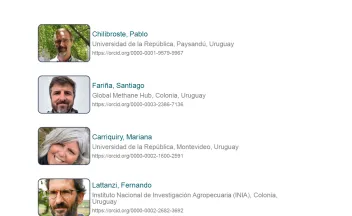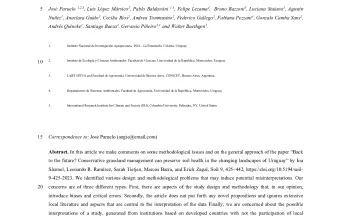CRONOSOJA:a daily time-step hierarchical model predicting soybean development across maturity groups in the Southern Cone.

ABSTRACT.- Accurate prediction of phenology is the most critical aspect for the development of models aimed at estimating seed yield, particularly in species that exhibit variable sensitivity to environmental factors throughout the cycle and among genotypes. With this purpose, we evaluated the phenology of 34 soybean varieties in field experiments located in Argentina, Uruguay and Paraguay.



